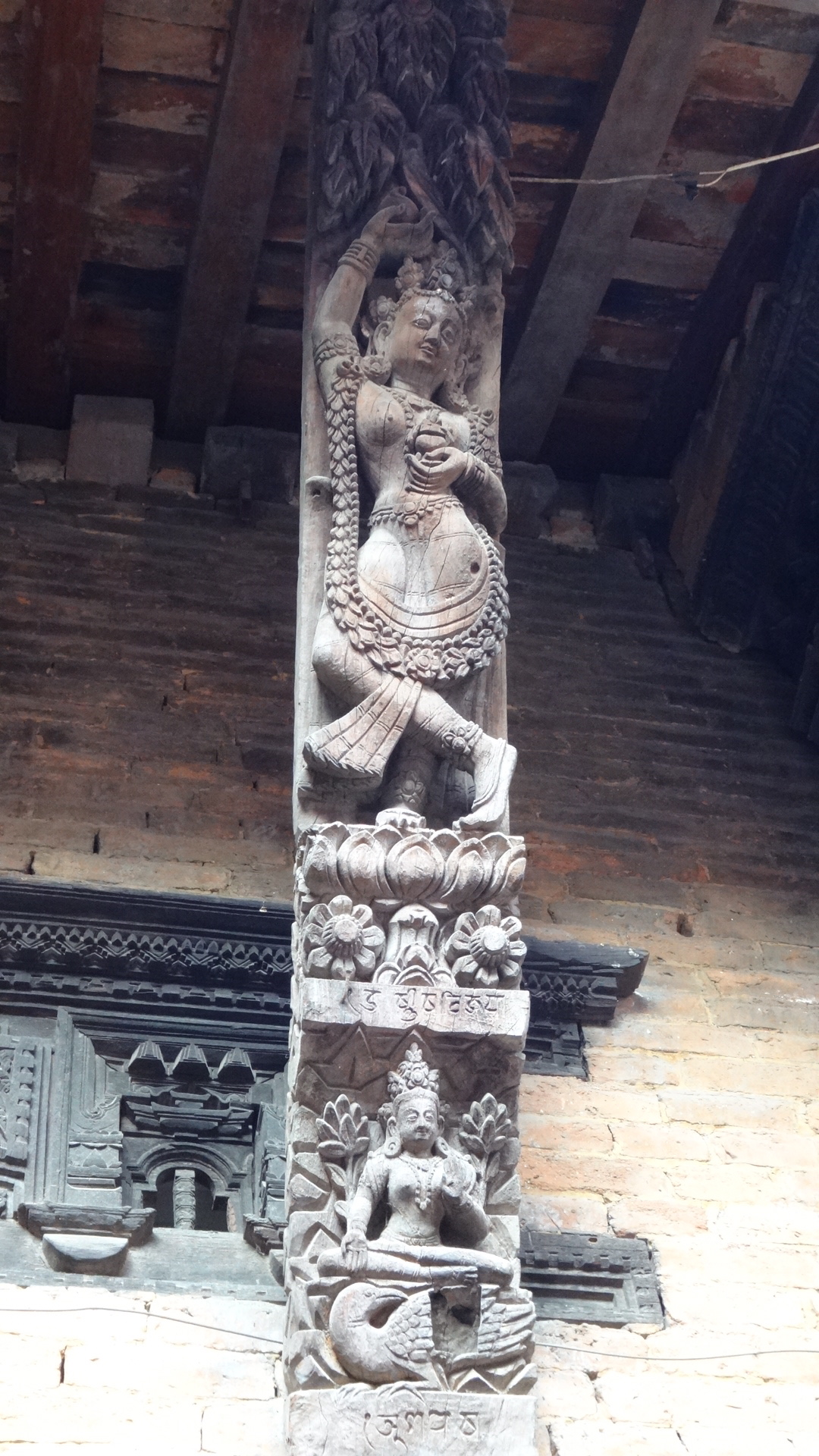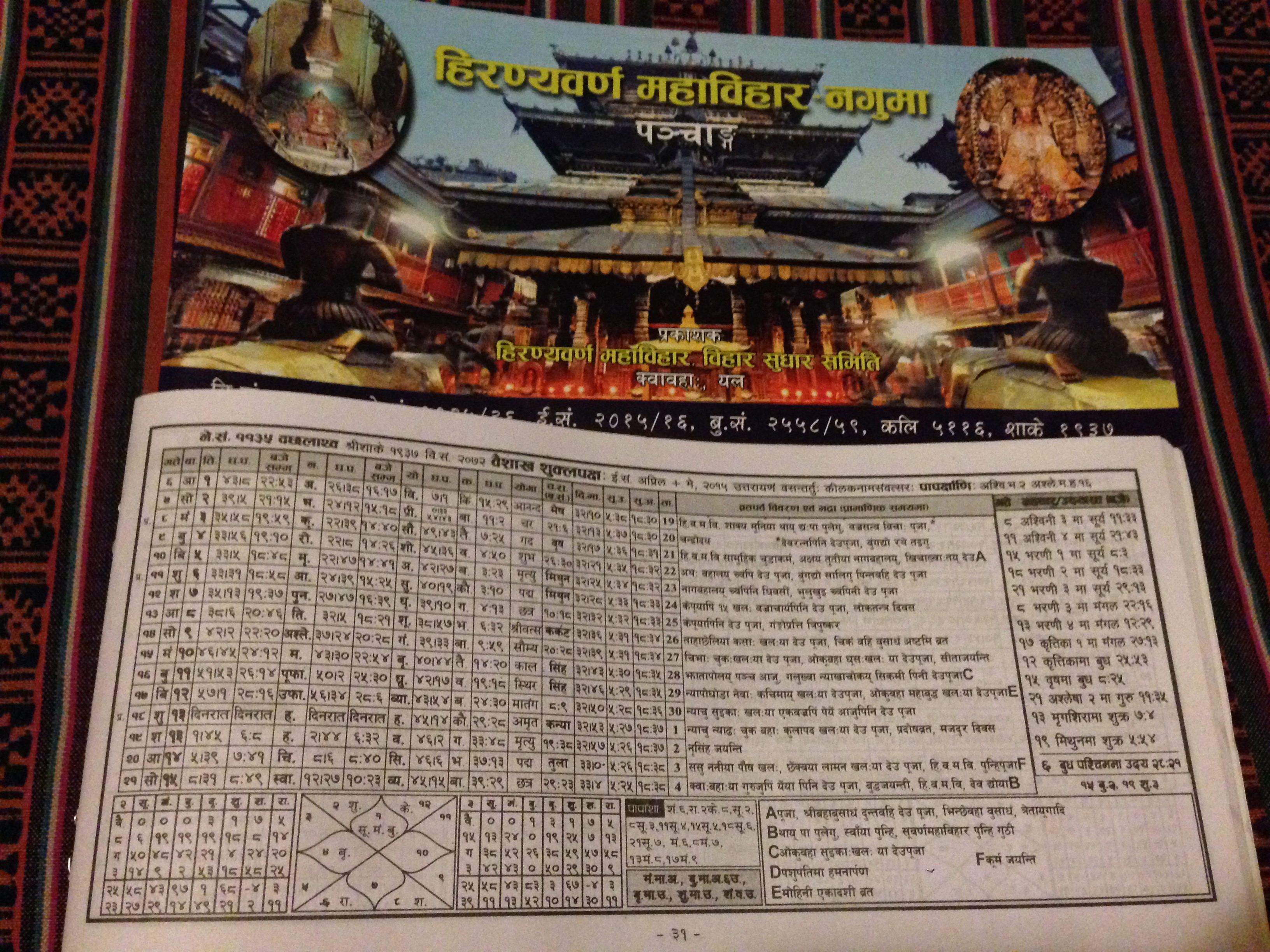Tucked in a back valley not far from Thamel, the backpackers’ haven in Kathmandu, is a 17th century Vajrayāna Buddhist temple called Guṇākaramahāvihāra (known locally as Chusya Baha). In it one finds rare woodcarvings of deities representing the seven planetary days (saptavāra) and the 27 nakṣatras (lunar mansions). Similar Buddhist astral iconography may be found in Tibet, Japan and Southeast Asia where esoteric Buddhism had reached. The nine-planet system (navagraha) which became popular in India possibly only after 6th century influenced also the Buddhist astral system, and is practiced in tandem with the saptagraha system.
Here one finds the fourth planetary day (Mercury) represented by the goddess Uṣṇiṣavijayā, paired up with the nakṣatra Aśleṣā. The 27 nakṣatras begins with Kṛttikā which was placed in the west. This does not conform with the conventional Buddhist astral system which places the first nakṣatra to the east instead.
At the Golden Temple (hiraṇyavarṇamahāvihāra) in Lalitpur (Patan), we find a copy of the Newar Buddhist almanac. In it one finds typical Indian pañcāṅga information, including astrological prediction based on 12 Indian zodiacal signs and navagraha, mixed with Buddhist elements. There were also descriptions of a solar eclipse, translated likely from modern astronomical almanac into Newari rather than calculated in traditional manner with texts such the Sūryasiddhānta.


